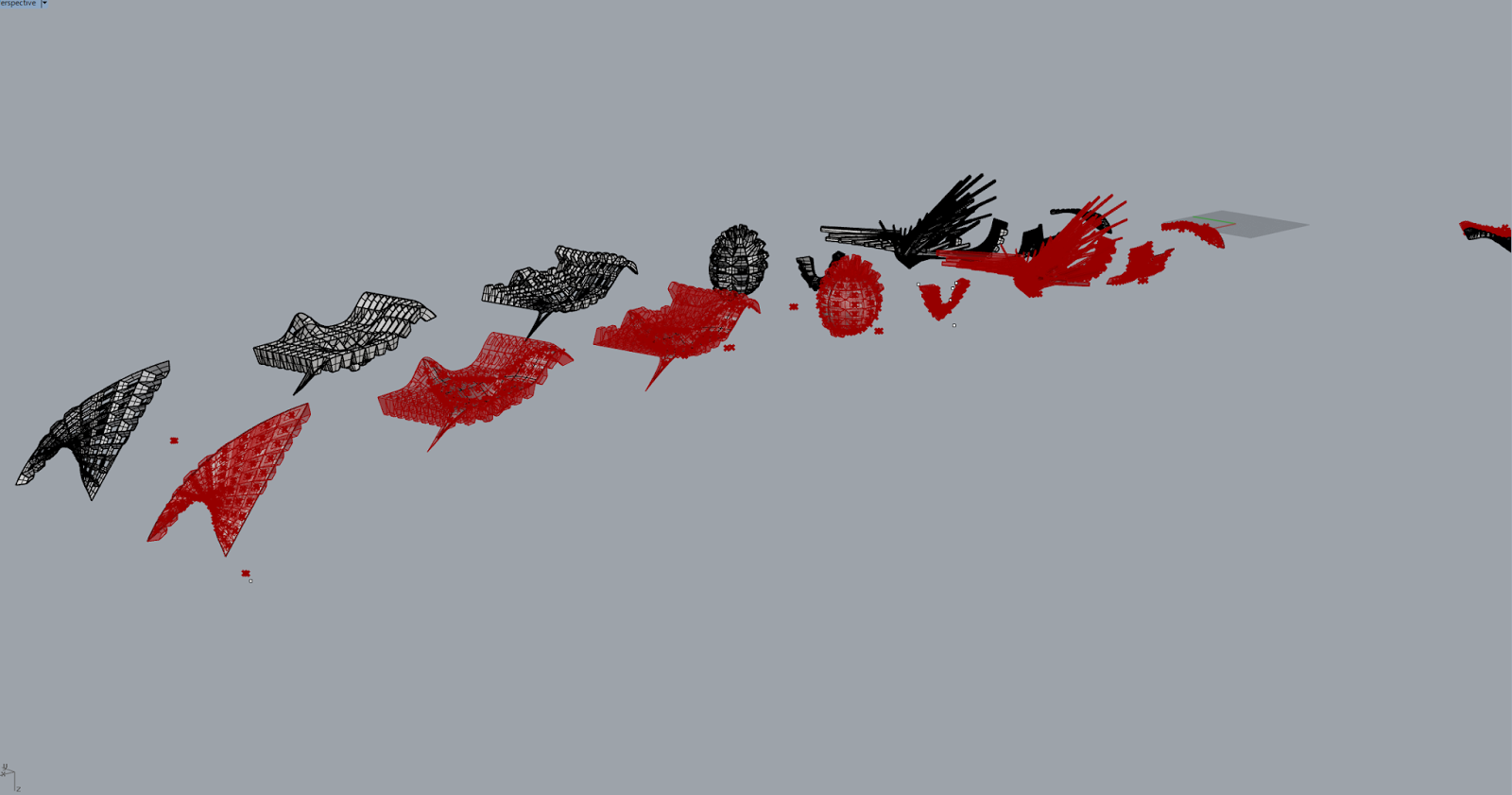Sunday, May 18, 2014
Saturday, May 17, 2014
Grasshopper Revisited_2c
I went back and applied the constructed lofted components to multiple surfaces, some being from my movement model and other derived from the motion of the flip. I edited some of the components of the code on different surfaces. I tried using negative numbers for the domains to get an extrusion on both sides. As suggested, I also extended the amplitude of the loft drastically to some surfaces creating a dramatic, pointed loft. Applying this code to a sphere, and not only a planar surface, resulted in a unique geometric shape. Similar to project 1b, I am working on exporting some line drawings of these surfaces. I find it uninformaitve to see these surfaces in Rhino modeling space and have found the line drawings to be more effective in conveying the concepts.
Animation Revisited
In this animation, I layered the earlier, shorter clips into one movie. I tried to make this animation more dynamic by editing scale, transparency, and length, components I was struggling to edit in Electric Image. I agree with Scott; think After Effects is a much easier program to configure and allows you to do compile multiple clips on top of one another. I attempted to pair the mysterious, partial videos of the model with full views. I found it intriguing to almost guess which part of the model was being exhibited.
Monday, May 12, 2014
Surface Construction form Grasshopper
Concept: create a curved surface derived from previous 2b model and create components within the surface that change based on attractor points. I started by building a curved surface with control points in rhino. I attempted this in grasshopper but failed to loft the curved lines.
I constructed a code that broke up the surface into U & V geometry. Then found the area of each component and used that to find the center point. Then I extruded the components, changed their size, and lofted the grids. After constructing the attractor points, I linked the original surface to change the loft sizes based on the points. The second and final attractor point variation I tried was to change the extrusion based on how close the point was to the surface. I did this by linking the points to the amplitude. Also, I was struggling with how not to move the attractor points manually and create sliders in grasshopper to change the geometry. This is not shown, however, I was able to link sliders in the X,Y, & Z direction to the points.
Subscribe to:
Comments (Atom)
























